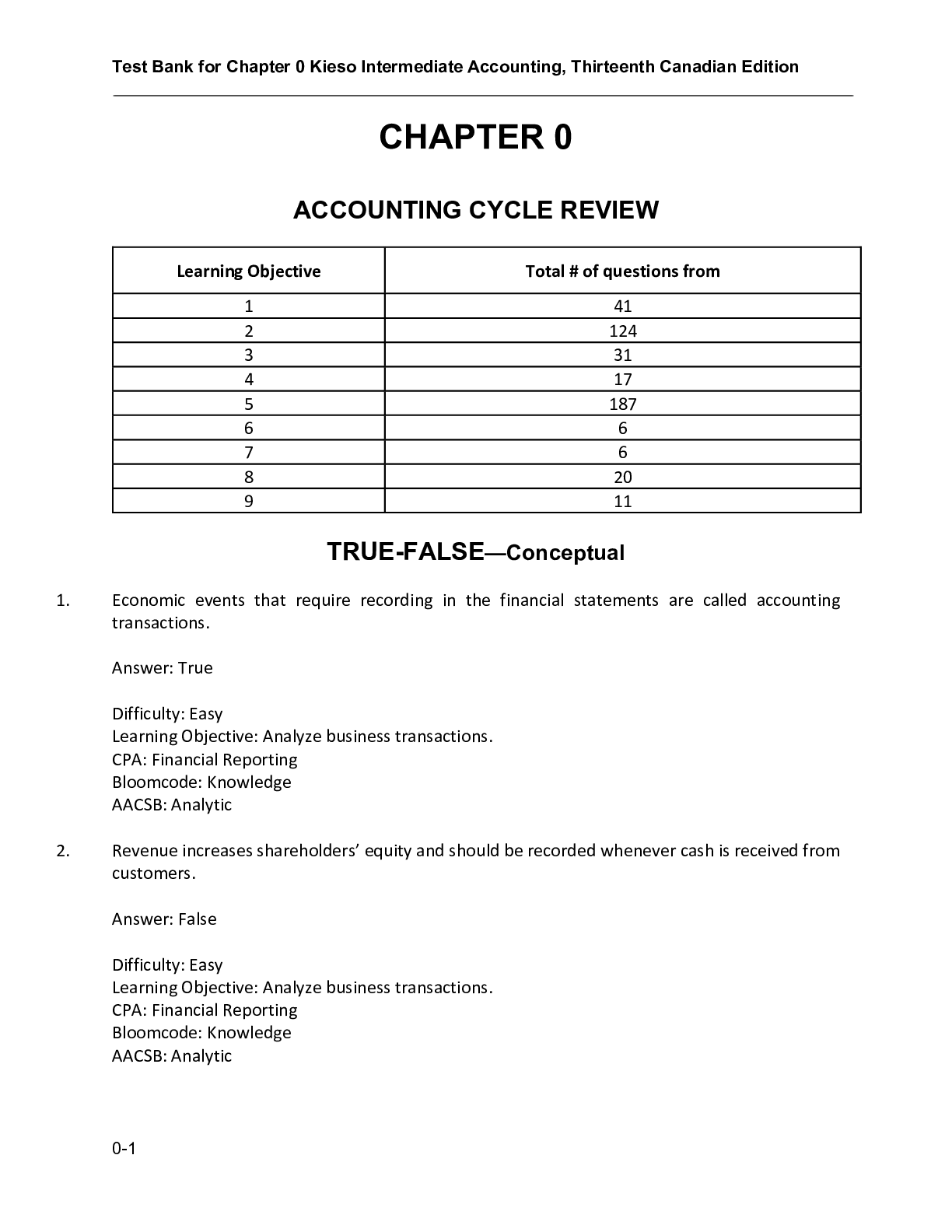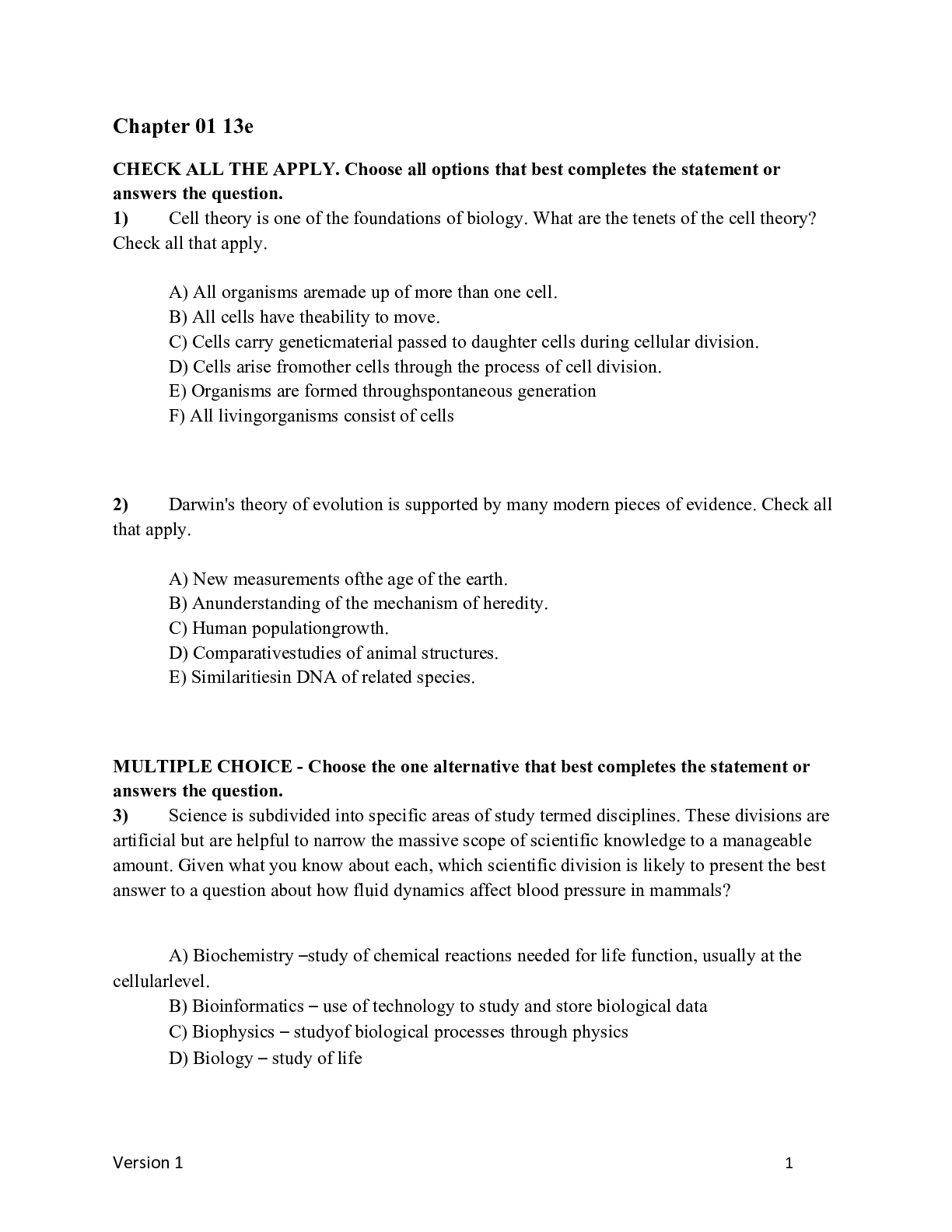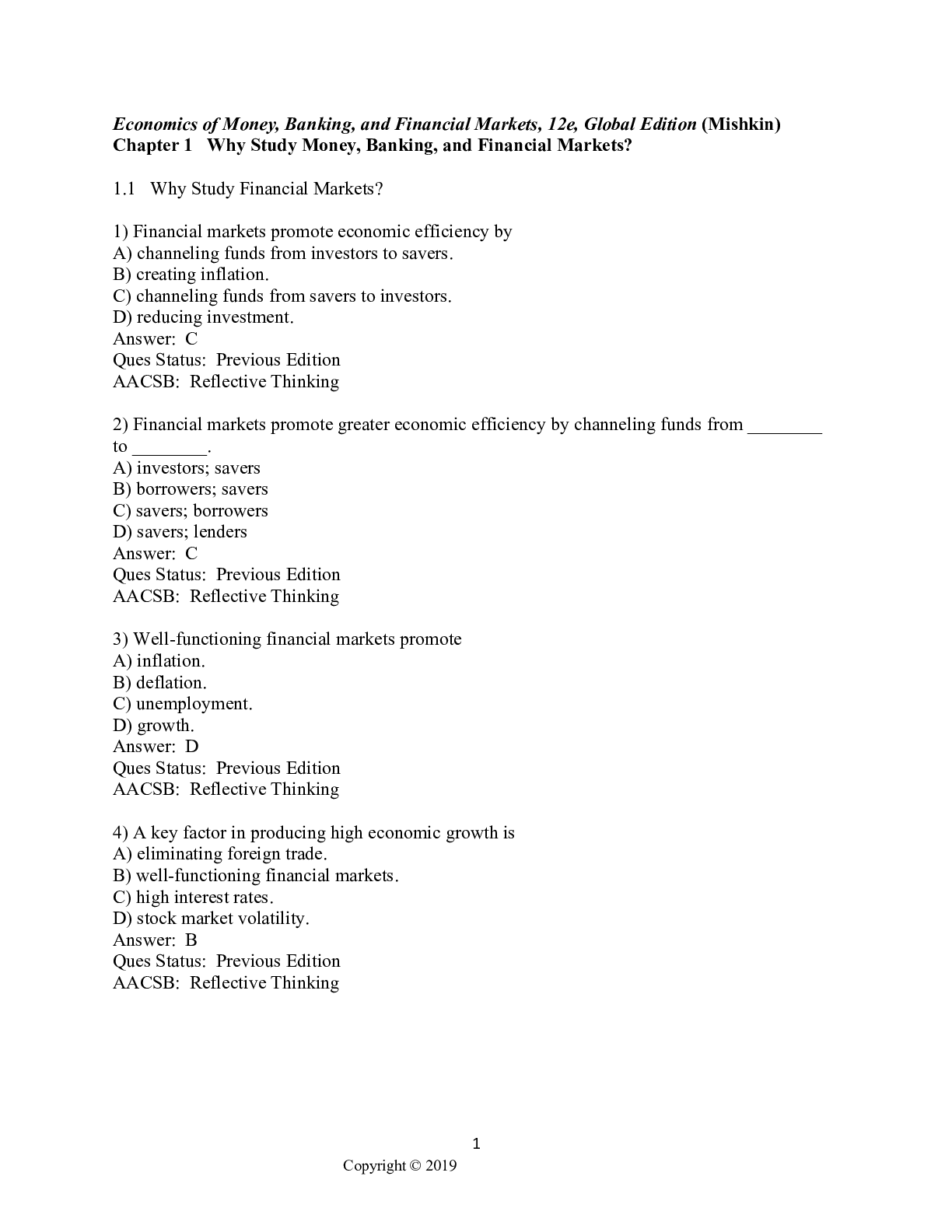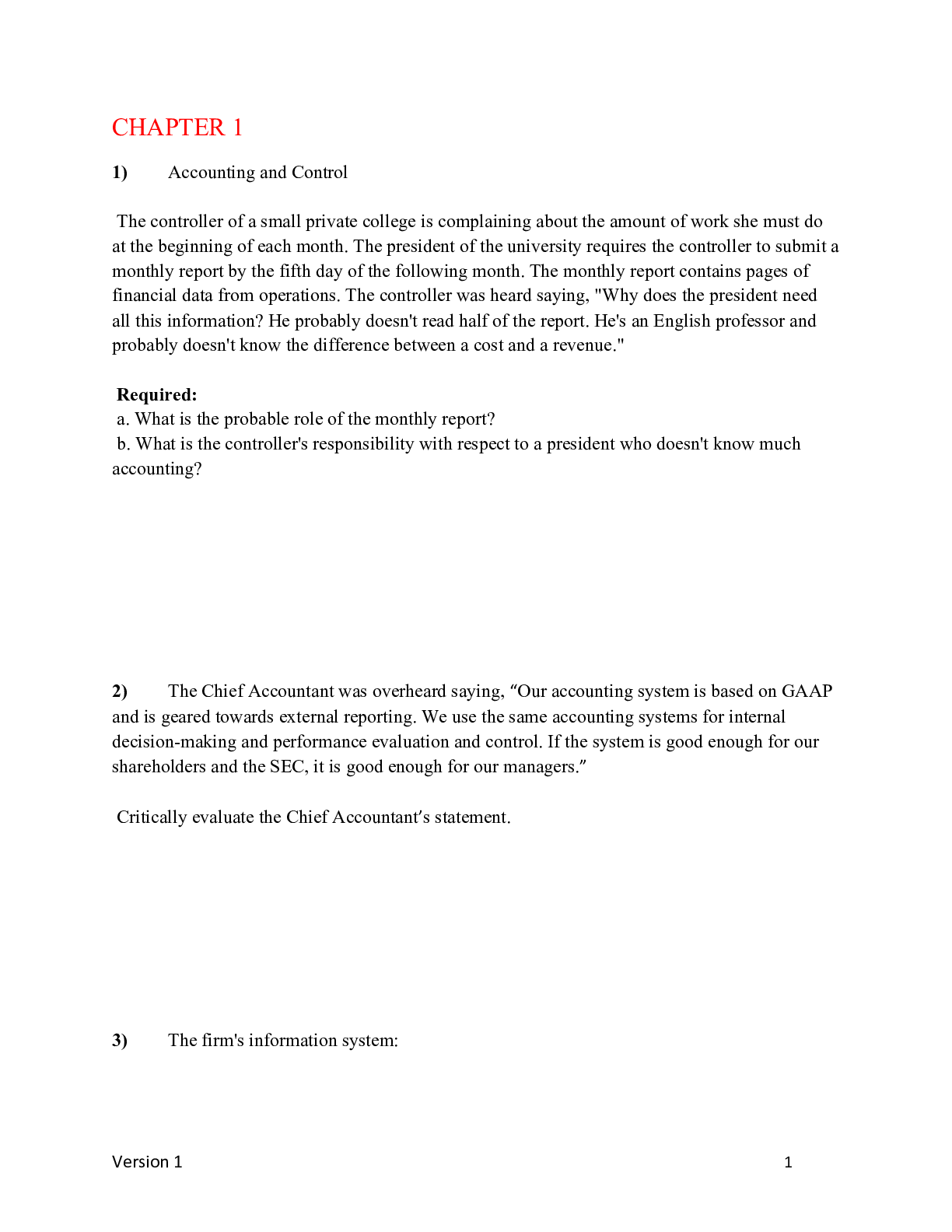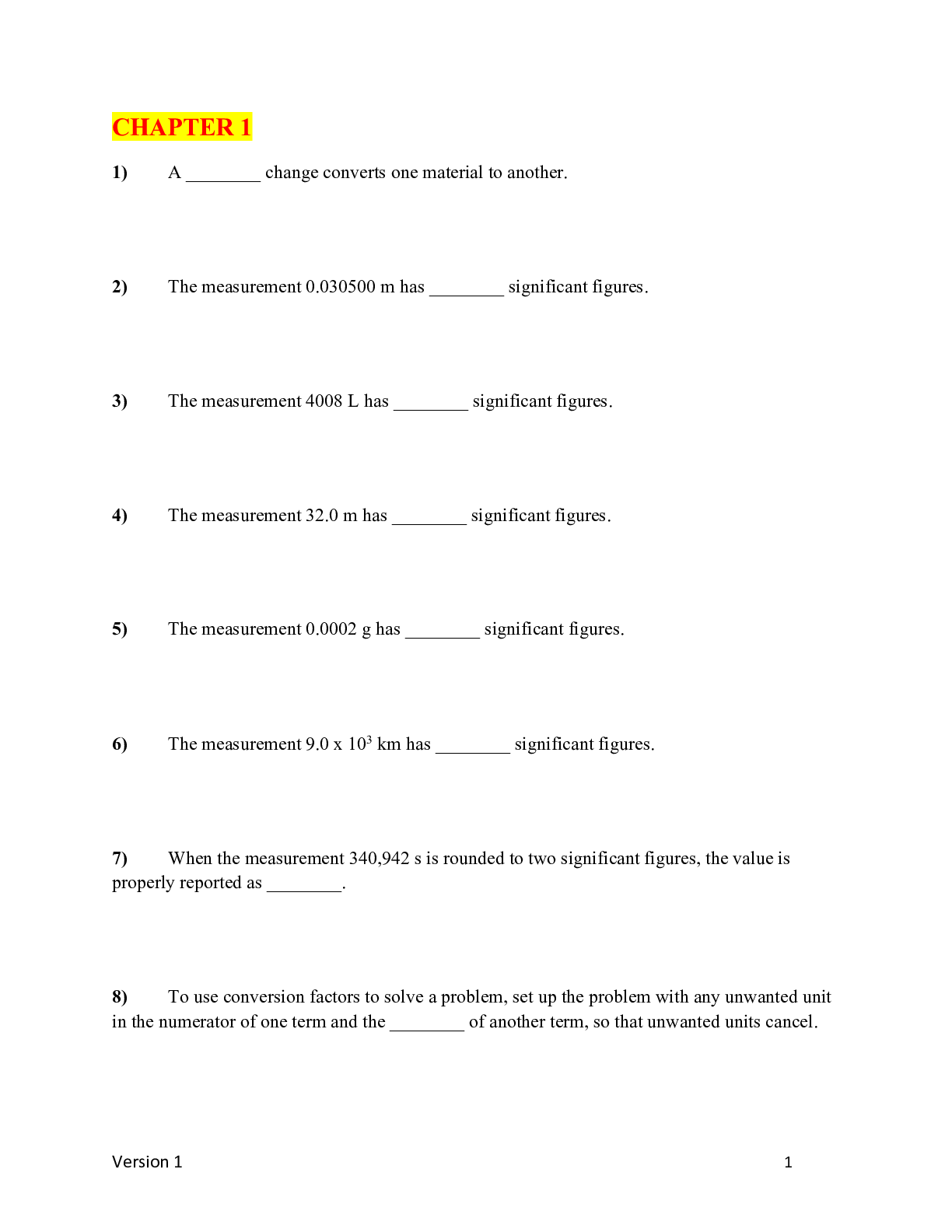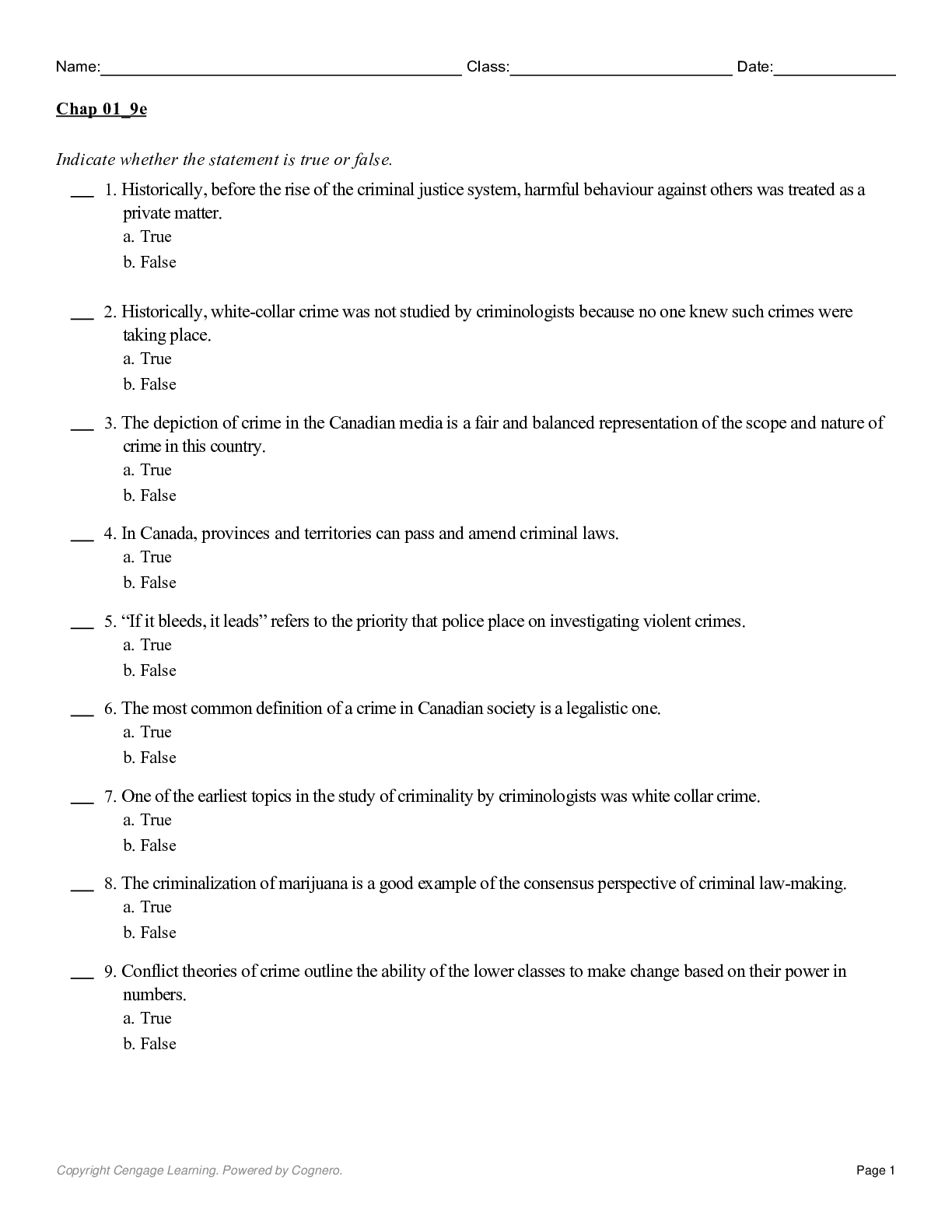Management > TEST BANK > Strategic Training and Development, 1st Edition by Berkley-Test Bank (All)
Strategic Training and Development, 1st Edition by Berkley-Test Bank
Document Content and Description Below
Test Bank for Strategic Training and Development, 1st Edition, 1e by Robyn Berkley, David Kaplan TEST BANK ISBN-13: 9781506344393 Full chapters included CHAPTER 1 • Training and Development S... trategy Learning Objectives Internal Environment Tasks People Social Organization Interdependence of the Internal Environment HR Infrastructure Company Strategy Aligning Company and Training Strategies Corporate Strategy Theories External Environment Economic Environment Political-Legal Environment Technological Environment Sociocultural Environment Ethics and Training Strategy Global Issues in Training Strategy Chapter Summary Key Terms End-of-Chapter Questions and Exercises CHAPTER 2 • Legal Issues in Training and Development Learning Objectives Jurisdiction and Ethics What If a Law Does Not Apply? Equal Employment Opportunity Civil Rights Act Americans With Disabilities Act (ADA) Age Discrimination in Employment Act (ADEA) Affirmative Action Liability and the Provision of Training Safety and Health Affirmative Defense Independent Contractors Chapter Summary Key Terms End-of-Chapter Questions and Exercises CHAPTER 3 • Needs Analysis Learning Objectives Organization Level Organizational Alignment A Training SWOT Job Level Task-Based or Competency-Based Methods Sources Person Level Conducting a Person-Level Analysis Motivation Theories Results of a Needs Analysis Learning Objectives Why Not to Train Chapter Summary Key Terms End-of-Chapter Questions and Exercises CHAPTER 4 • Learning Theories Learning Objectives Bloom’s Taxonomy: What People Learn Learning Theories Behaviorism Cognitivism Constructivism Humanism Pedagogy, Andragogy, and Heutagogy Pedagogy Versus Andragogy Heutagogy Learning Styles Are There Generational Differences in Learning? Chapter Summary Key Terms End-of-Chapter Questions and Exercises CHAPTER 5 • Training Evaluation: Reaction and Learning Learning Objectives Training Strategy for Evaluation How Training Strategy Informs Training Evaluation Learning Evaluation Strategy Developing Learning Objectives Planning Objectives Writing Objectives Quantifying Objectives Training Design for Evaluation Nonexperimental Designs Experimental Designs Training Design for Evaluation Summary Reliability and Validity of Training Measures Kirkpatrick’s Model for Training Effectiveness Training Evaluation Administration Level 1: Reaction Level 2: Learning Chapter Summary Key Terms End-of-Chapter Questions and Exercises CHAPTER 6 • Training Evaluation: Transfer and Results Learning Objectives Transferring Learning to Behavior Strategic Focus The Right Kind of Leadership The Ability to Plan For and Manage Change Effectively An Effective Measurement System Success at Levels 1 and 2 Kirkpatrick’s Model for Training Effectiveness Level 3: Behavior Level 4: Results Transfer of Training Near Versus Far Transfer Factors Affecting Transfer Training Evaluation Analysis Training Budgets Chapter Summary Key Terms End-of-Chapter Questions and Exercises CHAPTER 7 • Learning Methods Learning Objectives Traditional Methods Lecture Discussion Experiential Methods Debriefs Cases Role Plays In-Basket Games Simulations Choosing a Method Instructional Aids Overheads and Handouts Blackboards, Whiteboards, and Computers Flipcharts Video and Audio Asking Questions Question to Confirm Question to Engage How to Ask Questions Chapter Summary Key Terms End-of-Chapter Questions and Exercises CHAPTER 8 • Delivery Options for Face-to-Face Training Learning Objectives Instructional Settings On-Site Off-Site Unspecified Factors Influencing Selection of Instructional Settings Control/Standardization Fidelity Costs Social Capital Reward Value On-the-Job Training (OJT) Trainer Selection Trainer Support Training Design Training Evaluation Workshops, Speakers/Courses, Conferences, and Corporate Universities Features of Classrooms Features of Programs and Providers Corporate University Chapter Summary Key Terms End-of-Chapter Questions and Exercises CHAPTER 9 • Technology-Mediated Training and Development Learning Objectives Technology-Facilitated Learning Communicating Virtually Concerns With Virtual Communication Opportunities With Virtual Communication Human Resource Information Systems (HRIS) Needs Analysis Succession Planning Training and Development Delivery Training Evaluation Online Instruction Characteristics of Online Instruction Mobile Instruction Gamification Massive Online Open Courses (MOOCs) e-Mentoring and e-Coaching Chapter Summary Key Terms End-of-Chapter Questions and Exercises CHAPTER 10 • Careers and Succession Learning Objectives Career Theories Career Stages Exploration Establishment Maintenance Obsolescence Plateaus Career End or Transition Career Paths Mobility Patterns Predictability and Managing Careers Traditional, Protean, and Boundaryless Careers Traditional Boundaryless Protean Career Anchors Succession Planning Approaches to Succession Planning Methods and Tools to Conduct Succession Planning New Careers and Succession Planning Chapter Summary Key Terms End-of-Chapter Questions and Exercises CHAPTER 11 • Employee Development Learning Objectives Strategic Importance of Development Learning Agility Employee Development Assignments and Enrichment Opportunities Job Design Job Transitions Mentoring and Coaching Leadership Development Chapter Summary Key Terms End-of-Chapter Questions and Exercises CHAPTER 12 • Practical Skills for Training and Development Learning Objectives Communication Style Nonverbal Communication Improvisational Communication Listening Passive Listening Attentive Listening Active Listening Feedback Conflict Resolution Less Effective Conflict Resolution Styles More Effective Conflict Resolution Styles Self-Awareness Emotional Intelligence Chapter Summary Key Terms End-of-Chapter Questions and Exercises CHAPTER 13 • Training for Differences: Understanding Culture and Diversity Learning Objectives How People, Organizations, and the Global Context Differ Macro-Level Differences: National Culture and Global Competency National Culture Training Employees for International Assignments Organization-Level Differences: Company Culture Artifacts Espoused Values Basic Underlying Assumptions Onboarding to Train for Organizational Culture Recruitment Orientation General Program Attributes Micro-Level Differences: Individual Differences and Diversity Training Types of Diversity Applying Practical T&D Skills to Diversity Training Ethics and Training Diverse Others [Show More]
Last updated: 2 months ago
Preview 1 out of 137 pages

Buy this document to get the full access instantly
Instant Download Access after purchase
Add to cartInstant download
We Accept:

Reviews( 0 )
$33.00
Document information
Connected school, study & course
About the document
Uploaded On
Oct 04, 2022
Number of pages
137
Written in
Additional information
This document has been written for:
Uploaded
Oct 04, 2022
Downloads
0
Views
82

